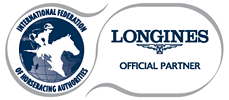IFHA Executive Council Endorses Best Practice Principles On Out Of Competition Testing
Tuesday 6 May 2014
At the 5 May meeting of the International Federation of Horseracing Authorities (IFHA) executive council, the attendees unanimously agreed to the best practice principles of out of competition testing detailed in the newly drafted Article 6E of the International Agreement on Breeding, Racing, and Wagering. The central basis of Article 6E is that as a matter of ensuring fair competition, transparency, welfare and sound breeding, racing authorities should be able to carry out testing for prohibited substances at any time in the career of any horse, from the commencement of training to final retirement from racing, at their discretion.
IFHA Chairman Louis Romanet presented this endorsement of the Federation’s executive council at a 35thAsian Racing Conference session titled Fair Competition and Drug Control.
“A fundamental component of any racing authorities’ doping control is the ability to test for prohibited substances from the beginning of a racehorse’s training to the conclusion of its racing career” said Mr Romanet. “Without a strong out of competition testing program, the interests of racing, breeding, and wagering participants and stakeholders are seriously compromised. While some racing authorities may face difficulty in accomplishing out of competition testing due to regulatory constraints or jurisdictional practices, it is critical that each authority examine its current drug control regulations and protocols to ensure out of competition testing is in place or begin steps for implementation".
The new Article 6E also calls for full traceability of horses that have been selected for out of competition testing. The responsible party, owner or trainer, must readily be able to inform the domestic racing authority of the exact location of a racehorse the subject of out of competition testing. Failure to do so may result in the subject racehorse to not be permitted to be entered in any pending races and ineligibility to enter any race for a period of six (6) months.
Article 6E will now be circulated among IFHA members for ratification.
Appendix: Article 6E
For further details, please contact:
Andrew Chesser, Deputy Secretary General, IFHA
Telephone +1 859 224 2741, Email achesser@jockeyclub.com
Notes to Editors
The International Federation of Horseracing Authorities (IFHA) has as its members racing authorities from approximately 60 countries throughout the world. Every year, the Federation organizes the International Conference, which updates the International Agreement on Breeding, Racing and Wagering endorsed by the conference in 1974.
Major areas of the IFHA’s activities include:
- Welfare and safety of horses and riders
- International Race Planning and Grading (“black type”)
- World Rankings
- Equine Prohibited Substances and Practices
- Harmonisation of Race Day Rules
- Fostering commercial development of the racing industry global
------------------------------------------------------------------------------------------------------------------------
Article 6E – OUT-OF-COMPETITION TESTING
To ensure fair competition, transparency, welfare and sound breeding, Racing Authorities will at their discretion carry out testing for prohibited substances at any time in the career of any horse, from the commencement of training to final retirement from racing.
To this effect:
1. Trainers must notify their domestic racing jurisdiction the names of horses in training with them and specify where relevant the exact location of such horses.
2. When a racehorse is out of training at any time in its career from the commencement of training to final retirement from racing, the owner(s) must readily be able to inform the domestic Racing Authority of the exact location of the horse.
3. If full traceability of any racehorse, whether in training or out of training, cannot be established at any time in its racing career, such horse will only be permitted to be entered in a race after a period of six (6) months in training with a duly licensed trainer.
4. The following prohibited substances, including other substances with a similar chemical structure or similar biological effect(s), are not to be administered to racehorses at any time in their career:-
4.1 Non-approved substances
Any substance not addressed by any of the subsequent classes of substances, and which has no current approval by any government regulatory authority for veterinary use, or any substance not universally recognised by veterinary regulatory authorities as valid veterinary therapeutic treatment.
4.2 Anabolic agents
(a) anabolic androgenic steroids,
(b) other anabolic agents, including but not limited to selective androgen receptor modulators (SARMs),
(c) beta-2 agonists, unless the substance is prescribed by a veterinarian as a bronchodilator at the appropriate dose,
4.3 Peptide hormones, growth factors and related substances
(a) erythropoiesis-stimulating agents, including but not limited to erythropoietin (EPO), epoetin alfa, epoetin beta, darbepoetin alfa, and methoxy polyethylene glycol-epoetin beta, peginesatide, hypoxia inducible factor (HIF)-1 stabilisers,
(b) growth hormones and growth hormone releasing factors, insulin-like growth factor-1 (IGF-1), and other growth factors,
(c) synthetic proteins and peptides and synthetic analogues of endogenous proteins and peptides not registered for medical or veterinary use,
4.4 Hormones and metabolic modulators
(a) aromatase inhibitors,
(b) selective estrogen receptor modulators (SERMS) and other anti-estrogenic substances,
(c) agents modifying myostatin function, including but not limited to myostatin inhibitors,
(d) insulins
(e) peroxisome proliferator activated receptor δ (PPARδ) agonists, including but not limited to GW 1516,
(f) AMPK activators, including but not limited to AICAR (5-aminoimidazole-4-carboxamide-1-β-D-ribofuranoside)
5. Therapeutic use of substances specified in point 4 above may only be exceptionally applied in the following circumstances:
- When the Racing Authority has decided to offer the facility for such exceptional use for therapeutic purposes and where no other reasonable therapeutic alternative exists.
- The specified prohibited substance being exceptionally used therapeutically must be prescribed by a veterinarian for the sole purpose of treating an existing illness or injury, and the details of the diagnosis, substance and administration protocol must be recorded and supplied by the trainer to the Racing Authority. If the horse is not under the direct control of a trainer at any time in its career from the commencement of training to final retirement from racing, the owner is responsible for this notification to the Racing Authority. This system must be supervised by the Racing Authority’s veterinarian(s).
- A horse shall be ineligible to race until a minimum of six (6) months has elapsed after the administration of any of the substances specified in point four (4) above, and the Racing Authority must test to ensure that a horse treated therapeutically with any of these substances is free from the presence of such substances before racing.
- A Racing Authority must record, within the details it holds of the horse in question, information which it has received on the administration to that horse of such substances under exceptional use for therapeutic purposes. This information must be included when providing details on the horse to a Horseracing Authority or Stud Book Authority in any country to which the horse travels (including within Racing Clearance Notifications), including in the case of permanent export of the horse.
- The number of exceptional uses for therapeutic purposes and the details of the substances involved shall be notified to and reviewed by the International Federation annually.
|



